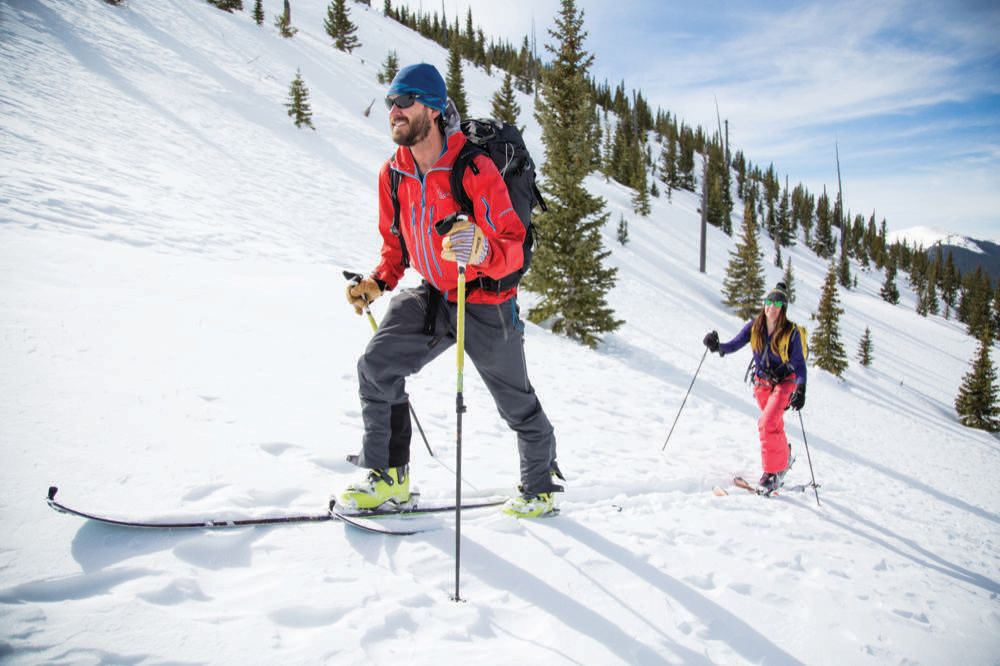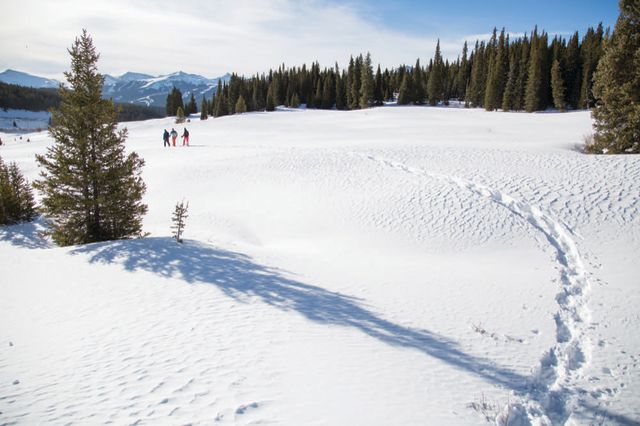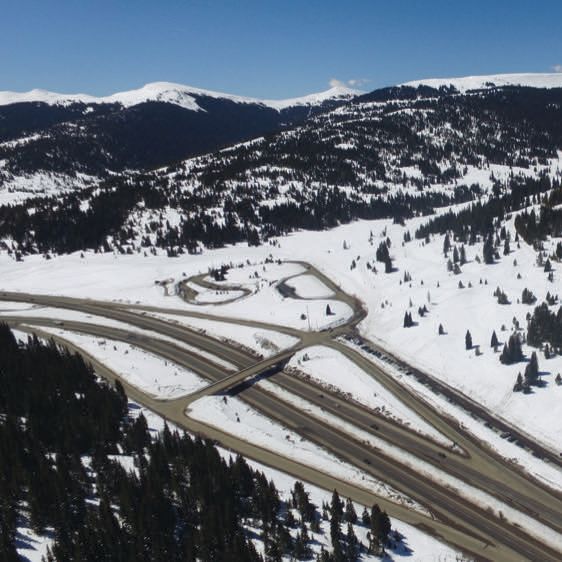Backcountry Skiing and Snowshoeing on Vail's Namesake Pass

Backcountry skiing is a popular means of exploring Vail's namesake pass.
Image: Zach Mahone
There is no shortage of ways to go backcountry skiing on Vail Pass. Not just directionally, either. You can skin, trade snowmobile pulls with a buddy, luck into a hard-to-get spot in one of Vail Powder Guides’ snowcats, or hire Paragon Guides or Vail Mountain’s guides to show you where the best powder is hiding.
Most human-powered backcountry skiing—including the Nordic variety—takes place on the north side of the interstate. The ambitious objective there is Uneva Peak, a 12,522-foot camel’s hump that sits atop a long ridge. But a range of sparsely treed meadows offer optimal runs below treeline, as well. Paragon’s Donny Shefchik says each group is different, and with that comes fluid goals that vary by the day. “We try to blend touring and turning,” he says. “Some people, all they want to do is get up and make turns, and others want to be out and do a route that includes some turns but is not just yo-yoing.”

Snowshoeing tours are another less extreme way of spending an afternoon or morning on Vail Pass.
Image: Zach Mahone
When the day begins, Shefchik runs through an avalanche transceiver check and often has each member of the group practice searching for a beacon. Then, he says, “We ask everyone two questions: How much climbing do you want to do? And how many miles or hours are you good for?”
A typical climb on Shefchik’s standard tour lasts about an hour. Clients do one to three runs, with a picnic lunch—provided by Paragon, like the avalanche safety gear—in the middle. Shefchik says he usually packs a deli sandwich, chips, nuts, trail mix, an apple, good cheese, and chocolate. The beauty of skiing on Vail Pass, whether by snowcat or foot, is the huge variety of terrain.
“There is a lot of south-facing terrain, but you also have the choice of exploring a fair amount of the compass rose. There are little north-facing shots, west-facing, east-facing,” Shefchik says. “And lots of options for skiing lower-angle, avalanche-safe terrain.” Paragon’s tours cost $225 per person for two people (paragonguides.com), while Vail Mountain’s tours cost $149 per person, run only on Fridays, and serve as more of a backcountry basics day, with avalanche safety instruction in addition to a run or two. Avy gear is included but rental skis and skins are not. Meet at Gold Peak Lodge in Vail Village at 8:30 a.m. (970-754-4390, vail.com/nordic). Snowcat trips with Vail Powder Guides cost $500 per seat or $5,000 for the 12-person cat, and space is extremely limited (vailpowderguides.com).
High-stepping through powder on snowshoes can be almost as exhilarating as floating downhill on skis. Vail Pass rarely runs out of powder, which makes it a great place to snowshoe. Trails spider in all directions on the north side of I-70; and again, Paragon’s and Vail Mountain’s guides know the network as well as anyone. Both outfitters include snowshoes and poles, and either trail snacks or lunch. Expect to cover two to three miles in a half-day Paragon trip and four to six in a full day, Shefchik says. The pace is unhurried, and most outings include a naturalist element. ($190 per person for two people, paragonguides.com). Vail’s half-day group tours run daily and meet at 9:30 a.m. at Gold Peak Lodge in Vail Village ($99 per person, vail.com/nordic).










































